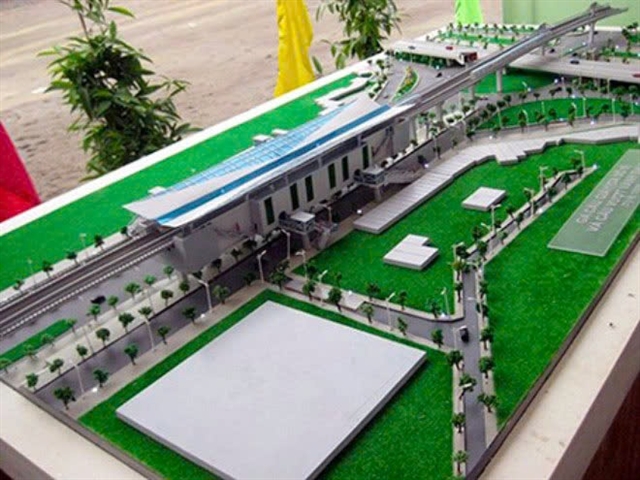Construction to begin on Ha Noi's second railway line 2
VGP - Ha Noi plans to start construction of the urban railway line No. 2 (Nam Thang Long - Tran Hung Dao) worth over VND 35.5 trillion (about US$1.5 billion) on October 9 as part of the city's long-term strategy to expand public transport system and ease traffic congestion.

The perspective of the urban railway line, connecting Nam Thang Long Urban area to Tran Hung Dao Street.—Photo baogiaothong.vn
Spanning 11.5 kilometers, line No. 2 will include an 8.9 km underground track and a 2.6 km elevated section. The line features seven underground and three elevated stations and a depot located in Xuan Dinh Ward.
The metro line has a total investment of VND35.5 trillion including VND29,672 in ODA sourced from the Japan International Cooperation Agency (JICA) and VND5,916 billion of coresponding capital.
The route begins at Nam Thang Long, runs along Nguyen Van Huyen, Hoang Quoc Viet, Hoang Hoa Tham, Thuy Khue, Phan Dinh Phung, Hang Giay Street, Hang Duong, Hang Ngang, Hang Dao Street, Dinh Tien Hoang, Hang Bai streets, and ends at Tran Hung Dao street.
It is expected to come into operation in 2030.
Earlier, the urban railway line 2 project was approved by the Ha Noi People's Committee in November 2008.
Currently, Ha Noi has two operational metro lines including the Cat Linh–Ha Dong and Nhon–Ha Noi Station urban railway lines.
The Cat Linh–Ha Dong line is 13 kilometers long, entirely elevated, with 12 stations. Each train has four carriages, a capacity of 960 passengers, a maximum speed of 80 km/h and an average operational speed of 35 km/h. It takes 23 minutes to travel the full length of the line.
The Nhon–Ha Noi Station line spans 12.5 kilometers, including an 8.5-kilometre elevated section from Nhon to Cau Giay and a 4-kilometre underground segment from Cau Giay to Ha Noi Station. The trains on this line have a maximum capacity of 950 passengers. The construction of the underground section is under going with the elevated section completed in 2024. Progress was reported in tunnel construction in early 2025, with a tunneling machine reaching a certain point in the project and over 647 meters of tunnel completed. The underground section is expected to be operational by 2027.
The capital city aims for a large metro network by 2035 (and beyond) with 14 new metro lines to reduce traffic congestion./.

